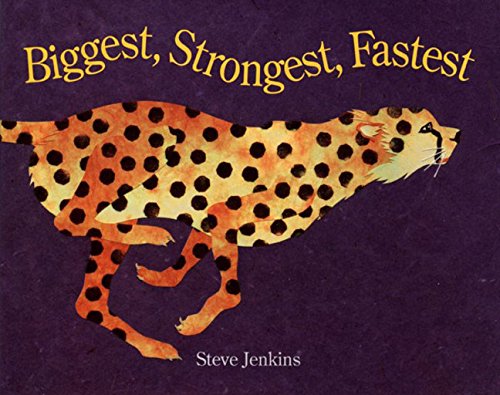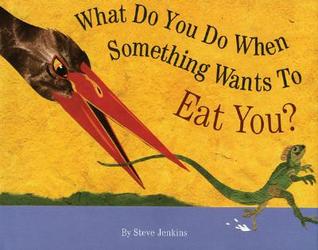If you don't have any Steve Jenkins in your life, you need to get some Steve Jenkins in your life. Seriously. His books are amazing. I was first introduced to Steve (we'll pretend we're on a first name basis) in college, when I had to read What Do You Do With a Tail Like This? for a children's literature class.
While I believe many of his texts are written at a third/fourth grade reading level, he has such a talent for making the text accessible to young learners. In fact, the inspiration for many of his books comes from the wonderings of his own children. And his wife helps him with the design of the books. Super cool, I know.
I read Steve's books to my first graders every year. They are not only perfect for meeting the Common Core informational text standards, but also cover some of the core ideas presented in the Next Generation Science Standards. A win-win, in my opinion. Which is why I present to you:
I am so excited about this author study. How excited? Excited enough to dust off this old blog and write about it. This author study includes activities for eight of Steve's books and will have students reading, thinking, writing, creating, comparing, contrasting, predicting, questioning, determining cause and effect, using context clues, sequencing, classifying, finding textual evidence, and so much more!
The first book I included had to be the classic What Do You Do With a Tail Like This? I mean, that book and I go way back. This book is great for making predictions:
And learning about special physical adaptations:
 |
| Students create their own "Amazing Adaptations" book based on information they learned. |
Next up is Creature Features, which quickly became another favorite read-aloud. Again, students are learning about special adaptations and will even use their knowledge of these adaptations to create their own unusual creature.
Ready for adorable animal babies? Next is My First Day. Students will work on comparing and contrasting, as well as using textual evidence to support claims.
Students will see procedural writing in a whole new light with How to Swallow a Pig.
The things that animals know how to do in this book are similar to things that humans know how to do, perfect for comparing and contrasting.
Students can have fun presenting what they've learned with these interactive flip-ups:
 |
| Students glue the flaps onto a different sheet and write/illustrate about the animal under each flap. |
And of course, students can work on procedural writing, including sequencing and paraphrasing information:
Next, students will receive some animal advice in Never Smile at a Monkey.
 |
| This guy means business. |
In these two activities, students are working on classifying the information form the text and using context clues to determine the meaning of tier II vocabulary words.
Inspired by Steve's son's love of superlatives is Biggest, Strongest, Fastest.
Students will practice determining between fact and opinion and then will use facts and opinions to create their own animal award (complete with graphic organizer to help get them started).
Steve's book Move! is great for reinforcing vocabulary and knowledge of verbs.
Students will learn how different animals move and will connect this knowledge to other animals that they are familiar with.
Last, but certainly not least, is the ever-entertaining What Do You Do When Something Wants to Eat You?
Students will practice with cause and effect, as well as show off their creative side in writing about what they would do if something wanted to eat them.

And of course, no author study is complete without materials to tie everything together. Here is a sample of what is found at the end of the unit:
 |
| Students will review Steve's books and/or write an opinion piece on which book was their favorite. |
 |
| Nothing says "Steve Jenkins" like some collage art! |
 |
| Students select one of the animals in Steve's books to learn more about. After researching, they create a mini-book. |
I hope you enjoyed the preview of my Spotlight on Steve Jenkins nonfiction author study. This was just a sample of the 85-page product available in my TPT store. If your students love learning about animals as much as mine do, this is definitely a must-have!





















































